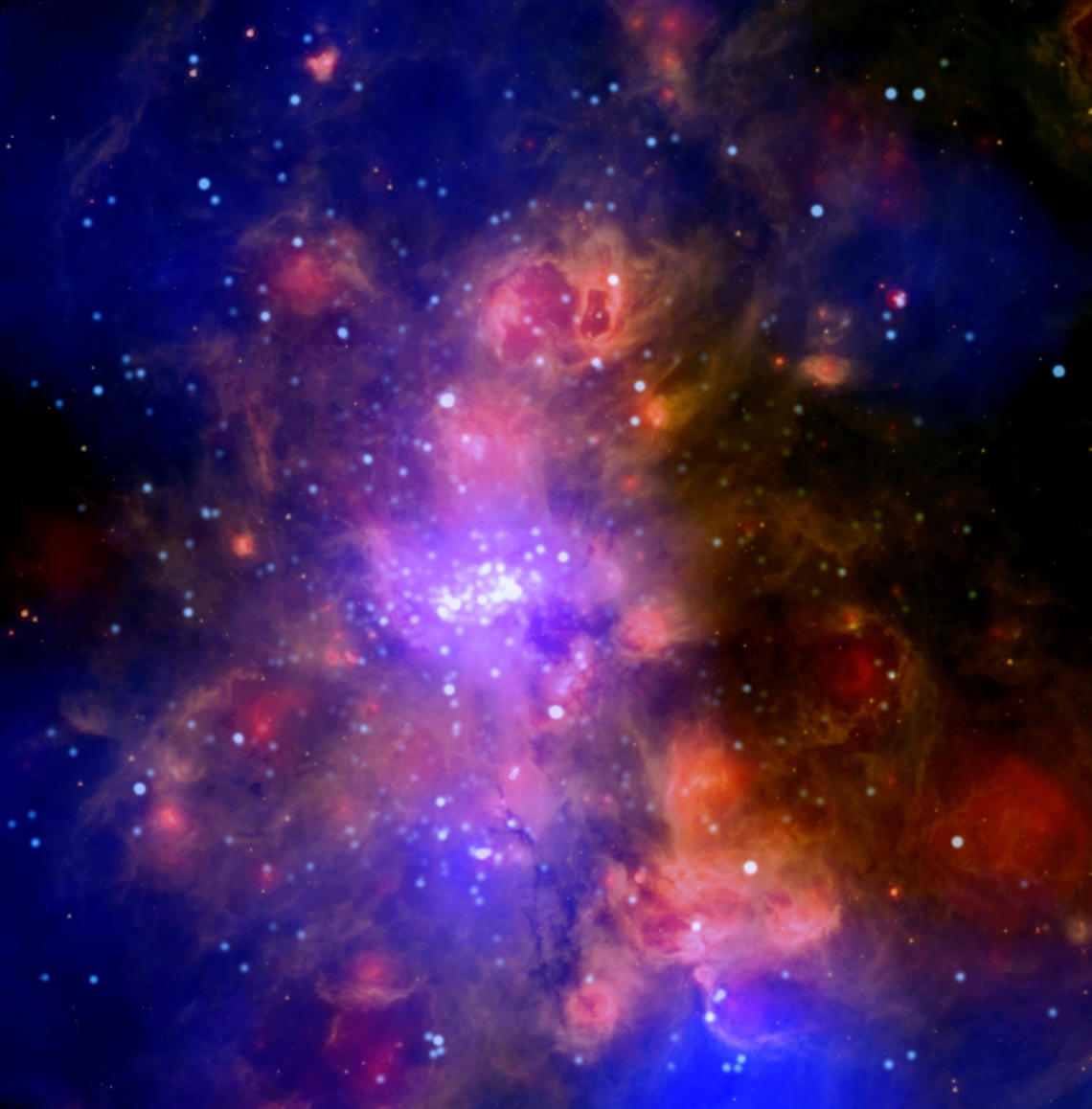Jan. 13, 2020
University of Calgary students play starring role in cosmic discovery

Faculty of Science students collaborating in an international radio astronomy project have discovered a giant magnetic field structure in a spiral arm of the Milky Way Galaxy.
Russell Shanahan and Stephen Lemmer uncovered the previously unknown ‘fingerprint’ of a magnetic arm while working with data from the international THOR project, a comprehensive survey of interstellar gas in the Milky Way.
- Photo above: Team members Russell Shanahan, Stephen Lemmer, Megan Buick, and Jeroen Stil. Photo by Riley Brandt, University of Calgary
Shanahan is a PhD student and, at the time of the discovery, Lemmer an honours astrophysics undergraduate in Dr. Jeroen Stil’s radio astronomy research group in the Department of Physics and Astronomy.
“We revealed an otherwise invisible part of this magnetic structure, called a spiral density wave, in the Sagittarius arm of the Milky Way,” says Stil, PhD, associate professor of physics and astronomy. “This is the first time that this pattern has been seen.”
The pinwheel-shaped Milky Way, which contains our solar system, is a typical “barred spiral” galaxy similar to billions of other galaxies. Galaxies have their own magnetic fields, which play an important but not well-understood role in forming stars from clouds of molecular gas and dust.
THOR, a multidisciplinary collaboration which includes scientists in Europe, Canada and the U.S., utilizes the Jansky Very Large Array of radio telescopes in New Mexico. THOR targets a quadrant of the Milky Way in which star formation in spiral arms and inter-arm regions can be studied in detail.
“What we discovered is there is this strong magnetic effect on the very onset of gas when it enters the spiral arm, even before star formation turns on,” says Stil, who leads the magnetism science component of THOR.
Adds Shanahan: “Afterward, we have massive star formation occurring in that region, and just outside of that region is where we see supernova remnants left from the explosions of dying stars.”

Multi-survey image of the Milky Way where line of sight is nearly along the Sagittarius spiral arm.
Jeroen Stil, University of Calgary
Shanahan and Lemmer are the first and second authors of the international team’s paper, “Strong Excess Faraday Rotation on the Inside of the Sagittarius Spiral Arm,” published in The Astrophysical Journal Letters, a journal for rapid dissemination of high-impact research.
Discovery changes the map of Milky Way’s magnetic field
Previous radio astronomy surveys weren’t equipped to detect magnetic structures in the Sagittarius arm. However, the THOR team had access to more advanced technology: the Very Large Array 28 radio telescopes’ recently upgraded broadband capability.
“It was working with a state-of-the-art data set that actually allowed us to make this discovery,” says Lemmer, who first spotted the telltale signature of the magnetic structure.
To detect the structure, UCalgary researchers measured a physics effect called “Faraday rotation,” which changes the polarization properties of radio waves as they travel through a plasma with a magnetic field.
Probing with radio waves along multiple lines of sight from Earth through the galactic plane, the team measured extremely strong Faraday rotation precisely along the spiral arm. Looking through the arm, the Faraday rotation was elevated, but on the other side the Faraday effect was subdued.

Specialized tools allowed researchers to measure magnetic fields in ionized interstellar gas.
NASA/ESA and the Hubble Heritage Team (AURA/STScI/HEIC)
“This Faraday effect only occurs if there is plasma and a magnetic field. Both need to be there,” Stil notes.
“Now that it is apparent that the Sagittarius spiral arm has a much stronger Faraday effect than previously known, scientists will need to redraw the map of the magnetic field of the Milky Way.”
The region of the galaxy where the team detected the magnetic structure is 18,000 light years from Earth. The structure is narrow and enormous — about 20,000 light years in length, or some two trillion times the size of Earth’s magnetic field.

Large star formation region W51 in the Sagittarius spiral arm of the Milky Way.
X-ray: NASA/CXC/PSU/L.Townsley et al; Infrared: NASA/JPL-Caltech
THOR collaborators in Germany performed the astronomical observations and processed data for the gas emissions. At UCalgary, Shanahan used advanced imaging techniques to make all the images of the polarization data. From these images, Lemmer determined the polarization metrics for several hundred radio sources.
The team now plans new observations of the same region with other telescopes that can detect more of the plasma, to try to disentangle the plasma from the magnetic field.
Megan Buick, another honours undergraduate in Stil’s group, is now analyzing the THOR data to see if there’s similar magnetic structure in a separate spiral arm of the Milky Way.
“The University of Calgary has been a leader for quite some time on magnetic field research in the Milky Way and other galaxies,” Stil says. “This discovery was really ‘made in Calgary.’”
The Natural Sciences and Engineering Research Council of Canada supported the UCalgary group’s research.



